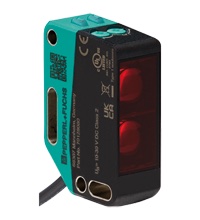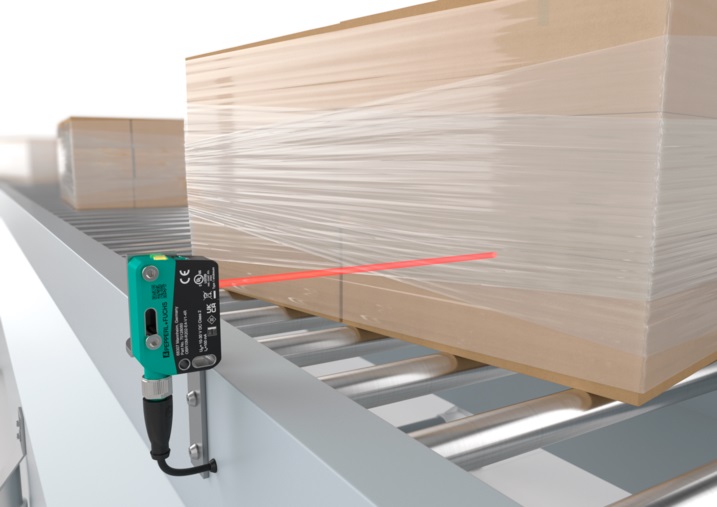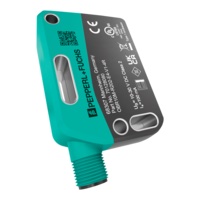Optical Sensing in a Cube: Pepperl+Fuchs R202
Pepperl+Fuchs' new R202 proximity sensor offers a cubicle design, a threaded face, and a bracket engineered for accurate mounting and adjustment.
As a core automation system operating principle, object detection is one of the more fundamental ways to detect and control motion. Since the very beginning of programmable controls, a variety of methods have been used to detect the presence of objects. The list is growing and includes limit switches, buttons, metal inductive sensors, ultrasonic beams, and last but certainly not least, optical sensors.
Pepperl+Fuchs R202 Optical Sensors
Pepperl+Fuchs, a leader in the world of industrial sensing and perhaps the first European automation company to use a “plus” in its brand name, has recently released a whole new series of optical sensors featuring a cubicle, rectangular shape. To support its applicability, the R2R integrates five different operating methods for various applications. Many optical sensors use a threaded face or body to attach the device through the center of a hole in a metal plate. Although this works well for many applications, a threaded body requires ultra-careful calibration. If the jam nuts are twisted just a few threads too many, the process might not work.

Pepperl+Fuchs new R202 diffuse reflective sensor. Image used courtesy of Pepperl+Fuchs
The new line of sensors from Pepperl+Fuchs, the R202 series, uses a cubic shape with carefully designed holes and slots to allow robust attachment in all kinds of situations.
Output Polarity and Light-On / Dark-On Operation
Because the sensors are discrete, each version of the series offers a complementary model in PNP or NPN output format. These sensors do not have dual-polarity outputs, so careful attention to part numbers is critical for proper device selection. For its diffuse and retro-reflective versions, part numbers ending with R5 denote PNP, while R4 indicates NPN output.
The R202 sensors provide convenient detection mode switching, either energizing the output when an object is detected (this is called light-on for reflective sensors) or when the object is removed (dark-on). A simple dial on the top of the sensor toggles this operation.
Sensitivity (range) can also be adjusted by using a second dial placed on the top of the sensor body.
Optical Detecting Modes
This series of sensors can be purchased in one of five different modes of detection: thru-beam, retroreflective, retroreflective for clear-object detection, diffuse mode, and finally, diffuse mode with background suppression.

Retroreflective for clear-object detection is a great solution for shiny metallic or clear objects that might be commonly found in packaging applications. Image used courtesy of Pepperl+Fuchs
Of those modes, the thru-beam, retroreflective, and diffuse reflective are the most common and familiar to engineers. The remaining two modes include clear-object detection, which is optimized for reflective objects like foil and bright metal, as well as clear items like plastic wraps on palletizers. The diffuse mode with background suppression allows the sensor to more effectively use the taught object presence to reduce false readings when the background has similar reflectivity characteristics.
Power Supply Range
All variants of this model are compatible with both AC and DC power supplies, with an acceptable range of 24 to 240 V. The output signals are PNP/NPN as appropriate for a control system, but the range of voltage and AC/DC compatibility allows this sensor to be installed in a wider range of environments where it might be impractical to pull in 24 V DC.

The cubic (rectangular) structure with holes and slots provides many options for equipment mounting. Image used courtesy of Pepperl+Fuchs
Optical Sensors in Industry
As long as we need to automate the control of motion, we will likely have a need for object detection. Although suppliers have steadily introduced innovation since the early days of control systems, advanced designs like the R202 series from Pepperl+Fuchs prove that we will continue to see developments in size, shape, power, outputs, and mounting styles to meet the evolving demands of the industry.

 Facebook
Facebook Google
Google GitHub
GitHub Linkedin
Linkedin








